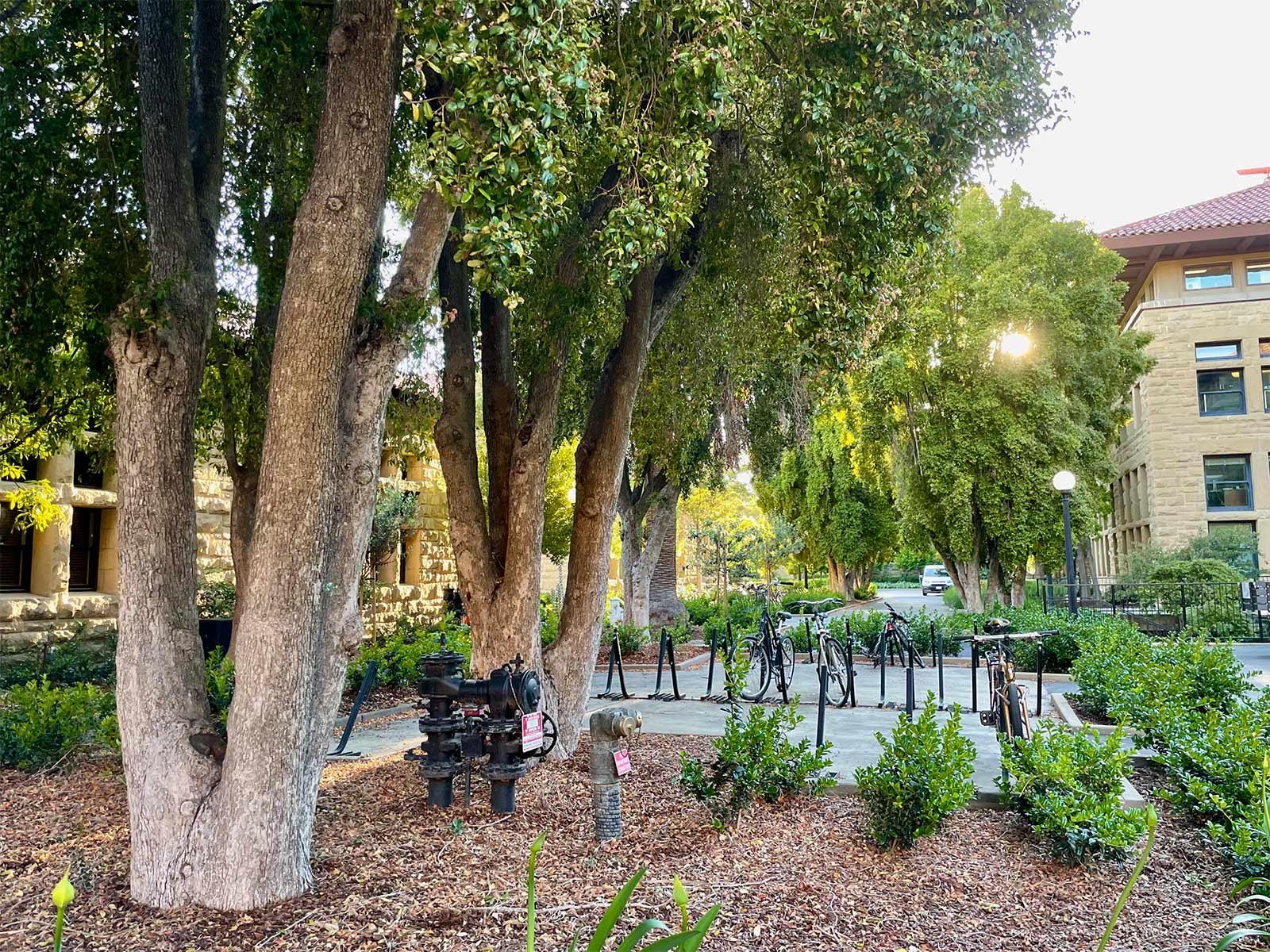Syzygium australe
 brush cherry
brush cherry

A stalwart of California landscapes of yesteryear, brush cherry performs splendidly as both a clipped hedge and an erect tree with a narrow crown. Glossy green leaves about 2 inches long emerge tinged in red. The main impact of the white flowers is the group of ⅔ inch–long stamens, as with other members of the myrtle family such as Lophostemon and Eucalyptus. Small white petals are present but inconspicuous. The fruit is a purple-red berry with crunchy flesh; the flavor is insipid but some juice is provided nevertheless. It is tastiest when dark purple and can be found on the tree for much of the year.
Towering specimens can be seen in the northwest courtyard of the Outer Quad, especially on the end closest to Memorial Court. Sizeable examples are on the right side of the entrance to Bechtel International Center. Two immense ones, each about 2 feet across, are at 619 Mayfield Avenue. The small courtyard at Geology Corner, now called Thomas Church Garden, has a clipped hedge of brush cherry on its east side, specified by Church himself in his 1960s plan for the area. He used the name Eugenia myrtifolia, an older name misapplied to S. australe. Another name erroneously used for the species has been Eugenia paniculata (or S. paniculatum), a rare species only occasionally found in California.
The word syzygy is unique in having three y’s and no other vowels, and refers to the alignment of three celestial bodies, such as during an eclipse. It comes from the Greek word for yoke or union, which also gives us the word conjugal. It likely refers to the pairwise arrangement of the leaves of this and related plants, another typical feature of the myrtle family.
Name derivation: Syzygium – Greek, yoked or paired (see text); australe – southern.
About this Entry: Authored Feb 2025 by Sairus Patel.




